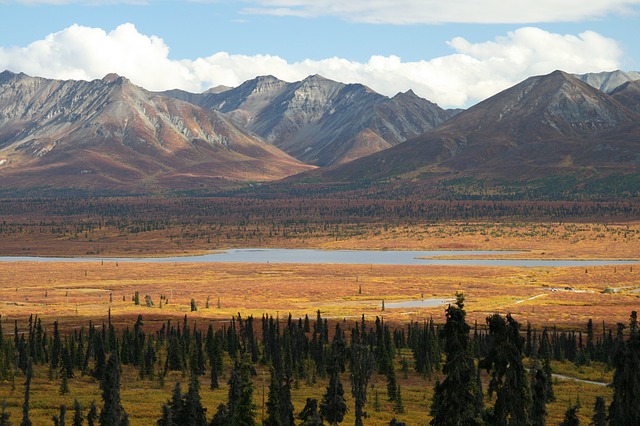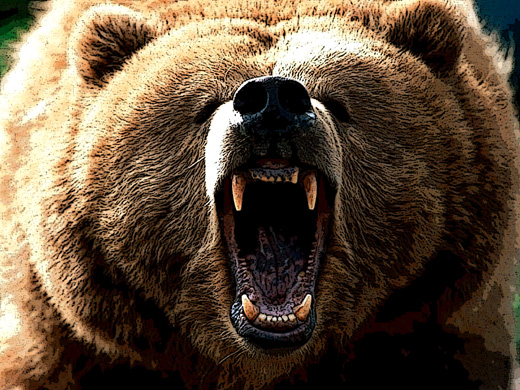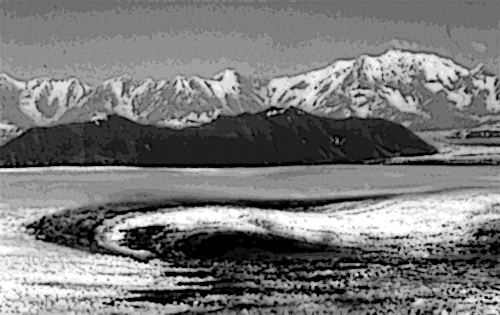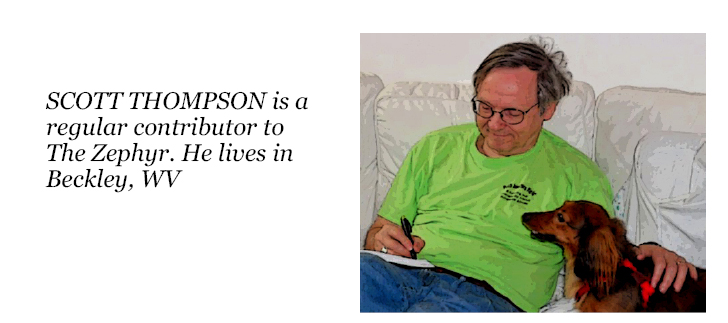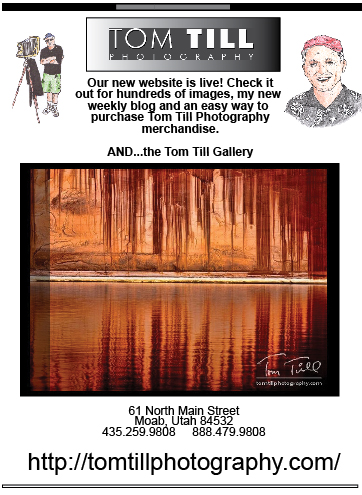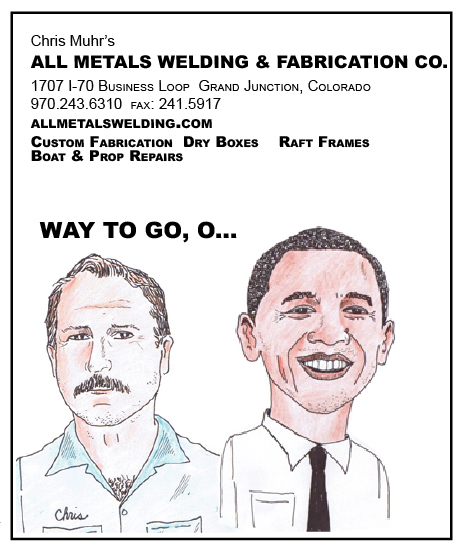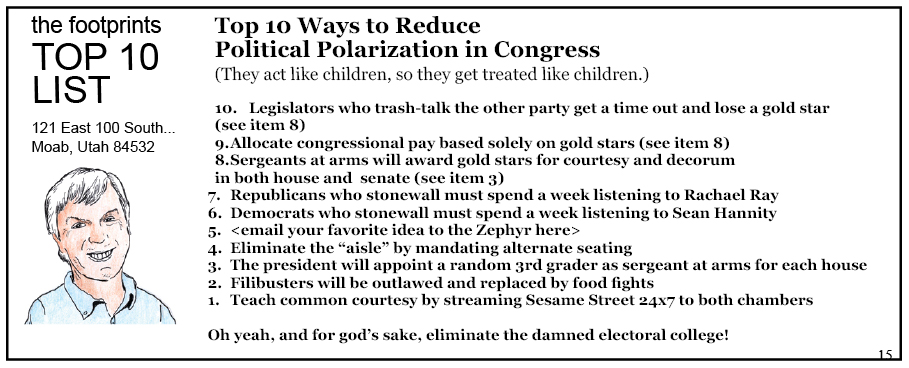“It ain’t wilderness unless there’s a critter out there that can kill you and eat you.”
– Doug Peacock
At 9:30 p.m. on June 12, 2000, our Alaska Airlines jet lifted off in the black, rainy gloom of Seattle, Washington, as I watched rain drops beading across the window.
For an hour this technologically competent but bat blind commercial flying tube tunneled through rain clouds and darkness at 600 mph. Nothing for Gail and me to do but shut our eyes and hold hands, absorbing the soft bumps of turbulence, comfortable in theory in our padded seats. I’d been on plenty of flights like this, but even so I mused that we humans didn’t evolve to hurl ourselves through space without feedback from our eyeballs.
Then it happened. At first I was only aware that an obscure, gray light had filled the cabin and that my eyes had drifted left across the aisle. When I stood for a good look the western horizon was filled with red light. I glanced at my watch: 10:30 p.m.
I can testify that flying into daylight will enliven your mood. We chatted merrily with a middle-aged woman from one of the suburban towns near Anchorage. In a pleasant tone she said, “Oh, you know, we had two killed last year by grizzlies,” as if it were a customary body count.
Not to single out grizzlies, however. As she explained, moose kill people, too.
It was after 1 a.m. by the time we landed in Anchorage, secured our rental car, and were cruising along the flat, wide streets. The sky was suspended in shades of red, orange and purple, between sunset and twilight. It was a city of 260,000, situated on a broad peninsula, framed by serrated mountains that were snow-covered to the base.
I was too excited to sleep.
As Gail drove us toward Denali National Park the next morning it became obvious, even before we hit the outskirts of Anchorage, that Alaska is a rough place – and vast – and that any encounter with it is visceral. The overwhelming landscape and forbidding climate seem to channel what people focus on with an intensity that is unknown on the Outside.
***
In summer the water-logged bogs sire hordes of mosquitoes that whine like World War II fighter aircraft. We humbly left our tent in the duffel bag.
Thus holing up for the night in the LAZY-J-CABINS-CAFÉ in Cantwell, Alaska, population 222, twenty-seven miles south of the entrance to Denali National Park. The big, black, hand-painted letters on the motel sign were farther apart on the left, jammed together toward the center, and then farther apart again on the right. Did the painter think he was running out of space at first and then change his mind? Whatever. We looked at a room: window, bed, toilet, shower, bathroom sink. We liked the package.
I got up at 3 a.m. to pee and afterward peeked through the curtains. Outside there was diminished, gray light, no trace of orange or red as at Anchorage.

The next morning the midnight sun had kept the low temperature to 50 or 60 degrees. Behind the motel, across our field of vision, was a range of graceful, symmetrical mountains, snow-suffused down to the base. The kind you stand and stare at. A glance at the map later showed that they were within the boundary of Denali National Park. A non-descript dirt road led from the motel parking lot toward the mountains, between scattered black spruce.
This was an ordinary segment of the Alaska Range; nowhere near Denali Peak or close to its 20,320 feet in height. They were not mountains that tourists hear about; there was no scenic pullover on the highway. But I think if this was a mountain range in the Lower 48 it would draw visitors from all directions and that photographs of it would be hanging in dentists’ offices and decorating place mats in chain restaurants.
My point is this. I suspect that it’s the pervasiveness, therefore the ordinariness, of heart-stopping beauty throughout Alaska that gets so much into the unconscious of the people who live there. For example, why would you bother building an upscale-looking motel beneath mountains like that, unless you’re a franchisee in a motel chain that requires you to? You know that whether your customers realize it on a conscious level or not, nothing you could construct within a reasonable budget would draw attention from these mountains, and that you’ll do just as well financially by serving your customers’ basic biological needs and leaving it there. In fact, why even bother paying for an expensive sign? The tourists already know they’re not in California.
***
At Denali National Park visitors were only allowed to drive as far as milepost 15. To go the other 75 miles you had to file onto the shuttle bus, which Gail and I did. Somebody in the Park Service with clout, who was determined to protect the sanctity of this land, must have won a battle to make it so.
We saw several grizzly bears (Ursus Arctos Horribilis) from the road, lumbering across the tundra at a considerable distance. Thoughtful, cautious creatures on that day. Evidence of Ursus unpredictability, however, is the presence of bright red signs on dumpsters in campgrounds across Alaska, bearing these warnings in large print:
Do Not Run. (Because bears will chase you down.)
Back Away Slowly. (Hoping the bear allows this.)
If the bear approaches, play dead. (A long shot.)
Fight back only if the bear continues to attack.
(While preparing yourself for the afterlife.)
The meta-message in this is that whether you get ripped apart is up to the bear, unless you have a rocket launcher or its equivalent in hand. Thus it is a native Alaskan survival skill to be alert for bears and to study their movements. The authorities, however, are forced to treat humans from the Outside like three year olds. For our own safety.
Also: bears claw the bark off aspen trees.
***
On the way to Fairbanks, well north of the Alaska Range, the land turns low and green. Parking on a bluff to gaze across the expanse of trees and lakes, I could see sixty miles in one direction and forty miles in another. Nowhere in view was there a road, house, building, telephone pole, vehicle, airplane, or any other human accoutrement. Nothing.
It was stunning. Not because there were magnificent geographic features from up here, although what I saw was lovely, or because this was all big and empty in the way Wyoming and West Texas are.
This place was endless. So endless that it wasn’t a place.
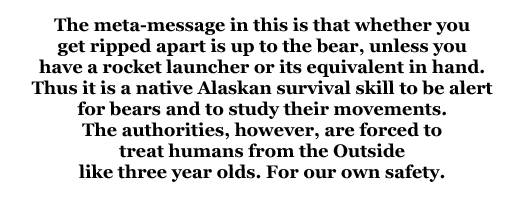
***
The high temperature the day we stayed in Fairbanks, elevation 446 feet, was 73 degrees.
Yet each parking space at the Super 8 Motel had a metal stand several feet high with sockets in a box atop, so that the motel’s patrons could plug in engine-warmers to keep their engine blocks from freezing. A guy told me that they start plugging ‘em in during October, after the equinox has banished the sun.
***
The highway forks at Delta Junction, population 840, ninety-six miles southeast of Fairbanks. To the left was the renowned Alaska Highway, cutting through the Yukon Territory and British Columbia. We forked right onto the Richardson Highway, due south. For almost 140 miles, with the exception of Paxson, population 43, this road didn’t near any human habitat.
It followed a gap in the Alaska Range and as it did so mountains patched with snow shouldered up above us, beyond the rock-strewn flat, under gray, lowering clouds. The mountains here didn’t form a contiguous range. Instead they ran up and down like ragged incisors, isolating the neatly shaped peaks. Ahead of us the flat curved into a low, green hill studded with dark spruce.
The wildness here was infinite, except for one thing: the Trans-Alaska pipeline. It ran above-ground along the flat, held up by an elaborate series of stands several feet high, snaking up and over the low hill ahead. For all the oil it carried, it was more slender than I would have guessed and there was a sinister gracefulness to it.
I have studied the photographs that I took here many times. Because, when I saw this pipeline running eerily beneath these brooding mountains, I felt a current of relief within me. Which I found both interesting and disconcerting.
Disconcerting because feeling relief, especially at the sight of this particular pipeline, was incompatible with my consciously held beliefs. In psychological lore, this is known as cognitive dissonance. While at the time I wasn’t in a state of alarm about global warming – that came later – I had been concerned about it since studying the subject in 1994. The Trans-Alaska pipeline was a vital artery in the very system of fossil fuel production that I knew was destabilizing the planet’s climate.
Interesting because never before had the simple presence of a human structure in a wild setting felt emotionally reassuring to me. My previous experiences had all run in the opposite direction. For almost 35 years I had treasured the way wild places engender solitude, yet these very places, all in the Lower 48, were unrelentingly threatened with desecration or destruction by the escalating cycle of human economic activity and overpopulation. That had always been my frame of reference. Put another way, all these wild places in the Lower 48, even when they were huge, had been encompassed by some boundary I was able to sense, perhaps unconsciously. Up here, by contrast, I was enveloped in wild areas so enormous that they obliterated any perception of that kind. When that happened I began to yearn for hints of a human presence.
I have realized that the way I reacted to the pipeline’s being there was a symptom, a trace, of alienation from the wildness of the land. As Carl Jung once said, people can get dirty from too much civilization. Even when we don’t want to be, I’d just discovered. Jung added, however, that whenever we touch nature we get clean. As much as I loved being in Alaska, I think I’d need to be immersed in it for awhile longer, maybe for a year, to give those endless expanses the time they need to cleanse that trace.
Speaking of alienation, consider the following quotation from an editorial, “The Desolate Wilderness,” that The Wall Street Journal has printed every Thanksgiving since 1961. It’s from a 17th century Pilgrim account describing their arrival in Massachusetts Bay in 1620:
“Besides, what could they see but a hideous and desolate wilderness, full of wilde beasts and wilde men? and what multitudes of them were, they then knew not: for which way soever they turned their eyes (save upward to Heaven) they could have but little solace or content in respect of any outward object; for summer being ended, all things stand in appearance with a weather-beaten face, and the whole country, full of woods and thickets, represented a wild and savage hew.”
Granted that the Pilgrims encountered delays and other mishaps that threw them in the path of a harsh, protracted winter they hadn’t prepared for, and that a lot of their people died as a result. Nevertheless, such a belligerent reaction to both the landscape of North America and the indigenous people who were living there was an asteroid-sized symptom of alienation, an indication of how completely the culture they came from had lost any bond with wildness, and the destructive potential it unknowingly harbored in consequence. While the Pilgrims’ looking skyward may have brought them spiritual solace, religion in that sense isn’t a substitute for the capacity to look with care beneath one’s feet and find splendor there.
At least a century before the Industrial Revolution the desolate mindset that fostered genocide against Native Americans and is now undermining the stability of our climate was already ingrained.
***

In Alaska a good cup of coffee seems to be fundamental. Thus we encountered the plentiful Espresso coffee stands of southern Alaska once we got down to Glennallen, still over 200 miles out from Anchorage. The first of the series was a tiny stand along the highway with nothing else in sight except open ground and spruce trees. As though it were perched on an iceberg.
We pulled in as much out of curiosity as for a fine cup of joe. Beneath the ample “Espresso” sign the rectangular wooden hutch was twelve feet long, just wide enough for a door on the back, and seven feet high. Painted on the customers’ side beneath the service window on a broad, white background, in flowing detail, were six Fireweeds: tall, pink-flowering plants with long, green-leaved stems. Being pollinated by two swallowtail butterflies.
It was a good cup of joe.
We found numerous Espresso stands as we got closer to Anchorage, some adorned with painted Fireweeds in different styles, one with a purple moose.
Summing up, when you come to Alaska expect the quirky and the weird, as well as a passionate experience of wildness. And because being there deeply penetrates the unconscious, expect insights as well.

